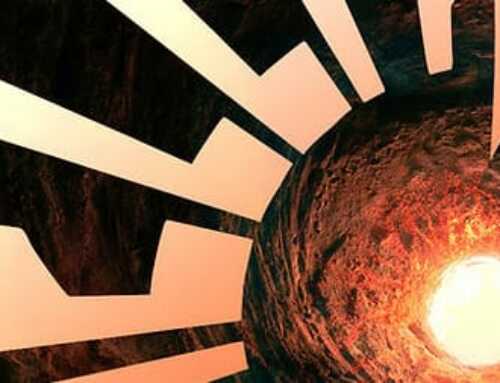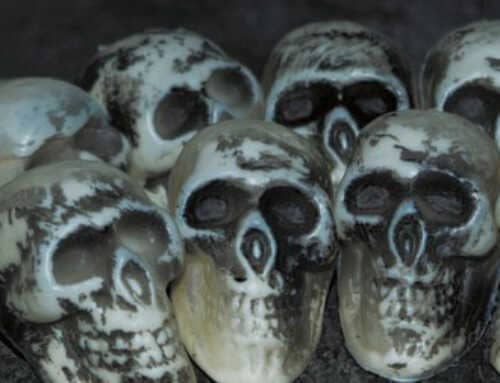 In Why Horror Seduces, Mathias Clasen wants to explain the lure of horror by situating the study of its related media within the larger framework of the evolutionary social sciences. In doing so, Clasen is advocating for a “biocultural” or “evolutionary” understanding of horror media that provides neurocognitive reasons for why people crave horrific stories, films, and experiences. Much of the critical engagement with horror media, outside of Clasen’s book and others akin to it, process things like spectator identification with characters, the objectification of women, and the filtration of cultural anxieties in the historical development of the genre. Approaching the topic from another angle, Clasen’s Why Horror Seduces is therefore best suited to horror fans who want to learn about the potential human behavioral explanations behind their fandom.
In Why Horror Seduces, Mathias Clasen wants to explain the lure of horror by situating the study of its related media within the larger framework of the evolutionary social sciences. In doing so, Clasen is advocating for a “biocultural” or “evolutionary” understanding of horror media that provides neurocognitive reasons for why people crave horrific stories, films, and experiences. Much of the critical engagement with horror media, outside of Clasen’s book and others akin to it, process things like spectator identification with characters, the objectification of women, and the filtration of cultural anxieties in the historical development of the genre. Approaching the topic from another angle, Clasen’s Why Horror Seduces is therefore best suited to horror fans who want to learn about the potential human behavioral explanations behind their fandom.
At his best, Clasen carefully stakes out areas where other scholars can contribute. For example, in the last chapter of Why Horror Seduces, Clasen anticipates the import of technological advancements in the video gaming and haunt industries as exciting new avenues for further study. Clasen also sums up large swathes of intellectual materials about horror media to get most of his readers up to speed about the territory of his particular research. Why Horror Seduces does not have a dense citational practice. In other words, you do not have to flip back and forth between footnotes to grasp its claims because everything this book has to offer is in the body of the text. As a result, Why Horror Seduces is a quick, digestible read. Moreover, each chapter is relatively short, often focusing on a single core idea, which makes this book a solid go-to for individuals who only have fifteen to thirty minutes at a time to pick up a book.
Although Clasen’s summaries of the discourse around horror are compact, there are several instances in Why Horror Seduces when he is a bit too casual with the way he dismisses the work of other scholars and disciplines. And, when Clasen does put forth scholarship he deems to be more accurate than the kind he is trying to counter, it is sometimes unclear why he feels these sources are better. The canon of American horror film studies, with its emphasis on cultural and psychosocial processes, is especially subject to this derision. In many ways, the work of these fields is what allows for Clasen’s book to exist in the first place. Granted, I may be a bit defensive because much of my own scholarly pursuits rest under the umbrella of “cultural studies,” but it is hard to get a handle on how Clasen sees the humanities as compatible with—or even generative for—his own theories. Across the book, though, Clasen cites fifteen of his other essays, thereby making him one of the most thoroughly cited authors in his own study. Perhaps the reasoning behind his distinctions and preferences are clearer in those works.
Alas, there is a time and a place for cultural studies and feminist psychoanalytic theory. While I can agree with Clasen that the psychoanalytic models of Sigmund Freud and Jacques Lacan are rapidly decaying in their applicability to new horror media, there are nonetheless still historical, cultural currents that make them relevant to the study of horror. The circulation of Freud, in particular, throughout American popular culture means that filmmakers, such as Alfred Hitchcock or John Carpenter, were well aware of his thinking. Even when filmmakers make use of these theories to subvert them, psychoanalytic theory still leaves traces on the final product. (Should you be interested in the why and the how of Freud’s influence in the United States, you may want to check out Adam Curtis’s The Century of the Self. The whole documentary series is currently up on YouTube and it’s rather gripping). Clasen is right to push us to explore the neurocognitive rationale behind horror’s draw, but we should be careful that research in this direction does not come at the expense of past or future attempts to understand the ways social, political, cultural, and historical forces shape horror media.
Not to nerd out too hard for the readers of this review, but, in order to fully understand the intervention Clasen is trying to make, it would be wise to consult a handful of other works that made very big splashes in the academic study of horror media. While there are many worth naming, I recommend Barbara Creed’s The Monstrous-Feminine, Carol Clover’s Men, Women, and Chainsaws: Gender in the Modern Horror Film, James B. Twitchell’s Dreadful Pleasures: An Anatomy of Modern Horror, and Julia Kristeva’s Powers of Horror. These books are great starting points for the budding horror scholar and they also happen to be the ones with which Clasen has a bone to pick. Even without a working knowledge of the field, Why Horror Seduces remains accessible while making its bold claims. Sure to spur strong opinions and critical thinking for scholars and fans alike, Mathias Clasen’s use of the social sciences helps point the study of horror media in a different direction.
Mathias Clasen’s Why Horror Seduces was published in 2017 by Oxford University Press







